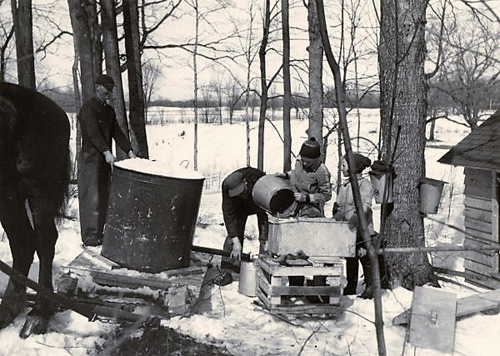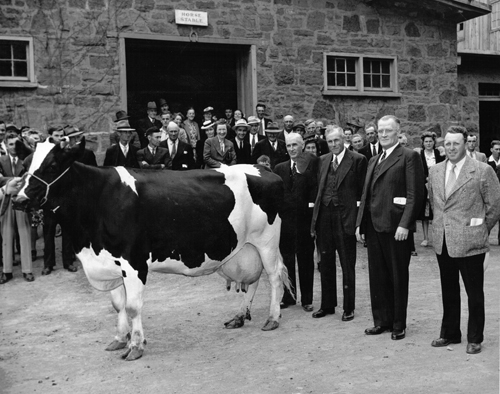The War Years on Campus

A few of Macdonald ’s contributions to the war effort at home and abroad included:
- Mitigating digestive disturbances plaguing US troops on emergency rations in the northern prairies and contributing to the studies on the culture of molds producing such antibiotics as penicillin, streptomycin and citrinin. Dr. E.W. Crampton, noted nutritionist and the first head of the Department of Nutrition.
- New course offerings including a Diploma in Tropical Medicine and courses on malaria, and malaria control, for army medical officers and Department of Veterans Affairs technicians. Institute of Parasitology.
- The Medical Department of the Army established a Pregnancy Diagnosis Station at the Institute of Parasitology using South African frogs as test animals. This work continued until the end of the war and helped prevent the dispatch of pregnant women to service overseas.
- Operating hospital food services, and assessing the dietary needs of sick or wounded soldiers returning from the continent for the Canadian Army’s Medical Corp, first in Liverpool, England and then in Bruges, Belgium. Mary Catherine “Kitty” Freeman, BHS’41 – aged 21.
- Optimizing the nutrition of both those going overseas as fighter pilots and those surveying the Canadian East Coast for enemy submarine. Command Messing Officer in the Eastern Air Command, Dietitian Helen R. Neilson, BHS’39, MSc’48.
Several memorials were created to honour the 430 men and 95 women who served in WW2; a commemorative entrance to the College library, a second Book of Remembrance and a new War Memorial Assembly to “promote an understanding of national and world affairs and to serve as inspiration for others to do their part towards the maintenance of freedom, tolerance and the improvement of human relationships”. Speakers included several Canadian Governor Generals, Prime Ministers, Mrs. Eleanor Roosevelt, and hockey legend Ken Dryden, LLB’73, LLD’18.
National Farm Radio Forum launches at Macdonald
Launched at Macdonald College, “this innovative national radio program introduced interactive distance education to rural audiences. Broadcast between 1941 and 1965 by the Canadian Broadcasting Corporation, its programming united farming communities from across the country around common interests. Relying upon discussion groups to enable informed conversations among neighbours, the program both instilled a broad sense of community and fostered local leadership and initiatives. This successful model would later be adopted by UNESCO to provide adult education for remote populations in many countries around the world.”
Morgan Arboretum

Dean Brittain especially prized the sprawling tree-covered lands that comprised the campus. His hobby was descriptive dendrology and ornamental horticulture, and he felt strongly that the college should have a planned woodlot. With the cooperation of the Morgan family and the generosity of J.W. McConnell, who purchased the 910-acre Stoneycroft farm in 1945, a portion of the woodlands were turned into the 245-hectare Morgan Arboretum as a study centre for the problems of woodlot management and as an outdoor laboratory for the woodlot management course.
Today the Arboretum is a living laboratory, allowing students and researchers to participate in a variety of teaching, research, and conservation programs, and providing a natural environment for recreation. The Arboretum not only contains the last remnants pf native woodlands on the island of Montreal but is also one of Montreal’s richest habitats for flowers, mammals, birds, reptiles and amphibians.
Milestones
- 1945: Montcalm barley is released by Prof. Emile A. Lods. It becomes the most widely grown malting barley grown in North America during the late 1940’s and early 1950’s.
- 1946: Five rows of modest single-storey huts were built to house married veterans. This area soon acquired the nickname “Diaper Dell.” Between 1946 and 1951, 75 children were born to families living on campus.

